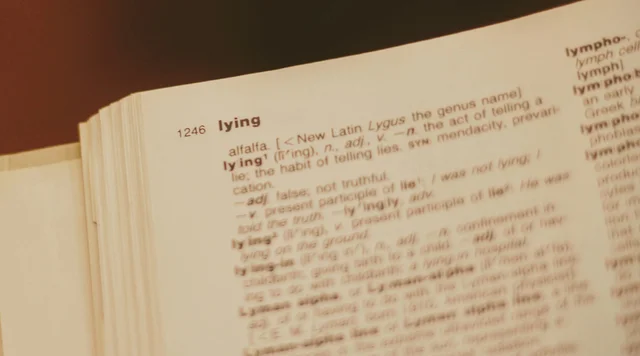
Judge Burke issued an oral order earlier this week with some interesting language criticizing the party's attempt at an amended complaint.
In Midwest Energy Emissions Corp. v. Arthur J. Gallagher & Co., C.A. No. 19-1334-CJB (D. Del.), the plaintiff accused a very large number of entities—More than 50, it looks like—with infringement of a number of patents, all in a single combined action.
Earlier this year, it moved to amend its complaint to add additional defendants it alleged were parent companies of defendants who were as acting as the parent companies' "alter egos and agents." Judge Burke granted this request as to one party, for which the complaint included more detailed factual allegations, but denied it as to four others.
As to those four, the Court held that the complaint didn't set forth enough specific detail:
With regard to the portion of the Motion wherein Plaintiffs seek to add claims against . . . the "four AJG entities" . . . the Motion is DENIED. The 4AC [fourth amended complaint] purports to bring claims against these four AJG entities by asserting that certain other . . . Defendants are the alter egos of the four AJG entities, or that those . . . Defendants are the four AJG entities['] agents. . . . But the 4AC never makes clear which of the . . . Defendants are said to be the alter egos or have an agency relationship with which of the four AJG entities. And the four AJG entities are subsidiaries or parents of each other, yet the 4AC makes no attempt to explain how any of those parent-subsidiary relationships do or do not impact the alter ego or agency analysis. A complaint that lumps together allegations against multiple defendants will not survive at the pleading stage if it fails to provide each defendant with sufficient notice of the basis for the claims against it. . . . Plaintiffs' alter ego and agency allegations as to the four AJG entities fail to provide such notice.
D.I. 404.
This week, the Court ruled on a motion for reconsideration of that ruling, and reiterated that the plaintiff needed to do something more than just lump differently-situated entities together:
Corporate entities, as a general matter, are understood to be separate and distinct from each other. . . . The 4AC does state that the four AJG Parent Entities shared the same president at one (unspecified) time, and that certain funds of three of those entities were pooled to (in some unspecified way) support the AJG REFCOs. (D.I. 373-2 at paras. 199, 240) But other than that, the 4AC included no facts rendering it plausible that (just to pick one example) Gallagher Clean Energy, LLC was so indistinct from AJG Financial Services Inc. that the two should be considered to essentially be one entity -- and that is also plausible to think that such a combined entity paid certain "costs" regarding coal or "control[ed] necessary tax filings" of the AJG REFCOs or had employees who "handle[d]" negotiation of contracts for the AJG REFCOs, and so on. . . . There are no clear allegations, for example, about whether there were overlapping officers or employees at the four companies at the time of the events at issue, or about whether the four companies otherwise shared resources, or about whether each failed to observe corporate formalities, or whether they each had inadequate capitalization, or whether their separate corporate existence was generally a fa[c]ade.
In particular, the Court was not impressed with the plaintiff's technique of grouping four defendants into one bucket and then making general allegations against each of them:
Instead, the 4AC reads as if all Plaintiffs were doing here was using word processing software to conflate four separate corporate entities into one, without asserting facts that would actually support such a conclusion (and that, in turn, would render it plausible to think that all four of them could have in turn been the alter egos of 12 other different corporate entities, or have been in an agency relationship with those 12 other entities). That kind of "cut and paste" approach cannot be a viable pleading strategy.
I was curious what plaintiff's "cut and paste" approach actually looked like here, so I pulled the proposed fourth amended complaint. Here is what plaintiff tried to do. First, it defined a single name for four separate entities:
Arthur J. Gallagher & Co., Gallagher Clean Energy, LLC, AJG Financial Services, LLC, and AJG Coal, LLC (individually and collectively, “AJG”)
D.I. 373-2. Then it made general allegations against all four:
AJG controls the necessary filings for tax credits through DTE employees.
. . .
Each of the AJG-affiliated RC Defendants, purchases coal from a coal-fired power plant and chemical additives from Chem-Mod. Each further pays a license fee for the use of ChemMod intellectual property. These costs are paid by each owner of the AJG-affiliated RC Defendants, including AJG.
Id. People say it a lot, because it's true: Delaware judges tend to respect the corporate form. I've seen other motions where parties get tripped up on exactly which entity sells the accused products, or which entity is licensed, or which entity has the information the other side needs in discovery. It's worth keeping results like this in mind next time you find yourself typing "Party 1, Party 2, and Party 3 ('Party')."
If you enjoyed this post, consider subscribing to receive free e-mail updates about new posts.






